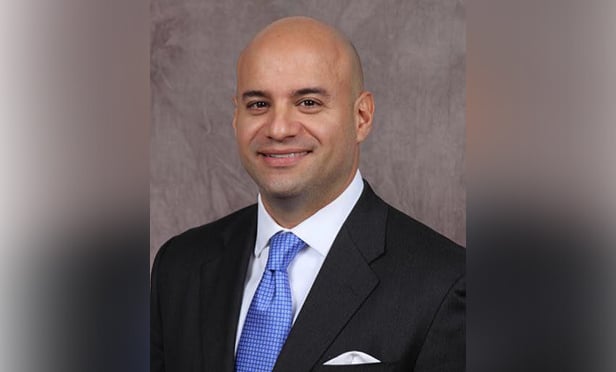
 Kenneth Correa of UBS.
Kenneth Correa of UBS.
UBS Financial Services is forging ahead with a major thrust to become the industry leader in delivering a diverse financial advisor sales force aimed at expanding market share.
With programs to recruit and promote people of diverse ethnicities, the wirehouse wants its advisors to reflect the ongoing demographic shifts in the country, executive director Kenneth Correa, metropolitan market head and co-chair of the firm's MOSAIC diversity network, tells ThinkAdvisor in an interview.
"This is a market that's up for grabs," argues Correa, a certified financial planner who oversees 250 employees, 140 of whom are FAs with total AUM of $25 billion, in UBS's 200 Park Avenue branch office in New York City and its wealth management business in Bergen Country, New Jersey.
Focusing on Hispanics, African-Americans, Asian-Americans and women of all races, UBS is seeking to align with and avail itself of the significant shifts in population and wealth pegged to increase dramatically over the next 25 years. The way to reach and serve these segments is to employ more FAs of color as well as more female advisors, Correa says.
Indeed, Brookings Institution reports that "racial minorities" are "the primary demographic engine of the nation's future growth, countering [a]…soon-to-be-declining white population." It projects that in 2045, the U.S. will become "minority white," when the proportion of Caucasians declines to 49.7%.
In the interview, Correa discusses initiatives designed to make the firm "look more and more like the demographics of the country."
UBS' Wealth Management Development Program, with the stress on next-gen FAs and which kicked off at the start of this year, emphasizes retention with compensation structured to "sustain" potential advisors "long enough to get into the profession," according to a spokesperson.
ThinkAdvisor recently interviewed Correa, 41, a native of New York City whose parents migrated to the U.S. from Columbia in the late 1960s. In addition to discussing UBS' efforts to be financial services' leader in hiring culturally diverse advisors, he provided a five-year forecast for FA teams overall.
Here are excerpts from our conversation:
THINKADVISOR: How is the MOSAIC diversity network and your Wealth Management Development Program — focused on next-gen advisors — tied in?
KENNETH CORREA: We're trying to increase the diversity within our financial advisor salesforce and to focus more and more on the next generation as a way for new advisors coming into our firm.
Why is diversity so important to UBS?
The first firm that figures this [issue] out — and we're working very hard toward that — will be a firm that's going to win because this is a market that's up for grabs.
But these are big changes and big challenges.
Diversity is a fact; inclusion is a choice. All the firms are going to be challenged with: How do we make sure the look of the firms continue to shift with U.S. demographics? We've made a choice — and our choice is to continue to have our firm look more and more like the demographics of the country.
What are the biggest shifts?
The segments of wealth in the U.S. that continue to grow at exponential rates are women, Hispanics, African-Americans and Asian-Americans. Higher levels of education are coming for these sectors, and with that, compensation and purchasing power will continue to grow.
UBS has an emphasis on working with high-net-worth clients. With the demographic shifts, will you be making a change in the profile of your target client?
We not only have to think about the client of today but the client of tomorrow. Higher levels of education will [bring] higher levels of compensation. The stress on diversity doesn't take away from our focus on the high-net-worth client of today. But it also focuses on the high-net-worth and ultra-high net worth client of tomorrow, and making sure that we're ahead of the curve.
What's MOSAIC's mission?
To call attention to the societal issues in the U.S. and that we need to have a firm that looks more and more like the demographics of the U.S. Our goal is to create inclusivity across the firm.
How do you try to accomplish that?



